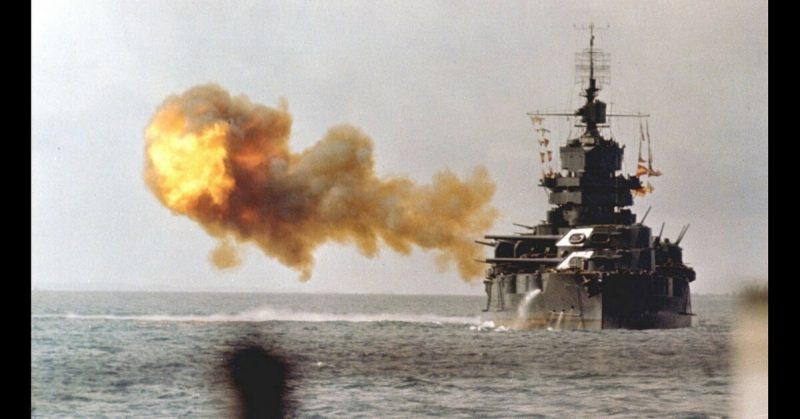In 1945, the United States was waging a bloody war in the Pacific Theater, locked in a deadly battle with the Empire of Japan. Their enemy was one of the Axis Powers, and had instigated America’s role in the conflict by attacking Pearl Harbor in 1941.
‘When the Fleet that Came to Stay’ was a propaganda movie made in 1945, several years after that unprecedented attack. It was produced at a time when the United States was working on a potential plan to invade the main Japanese landmass. This was not going to be an easy fight, and the government was looking for a way to brace the population back home for the inevitable cost in lives that such a mission would entail.
For this reason, the movie was made with a very somber tone. As a piece of propaganda, it was meant, at least partly, to prepare the American public for the possibility of high casualties and losses. This informed the serious atmosphere in many of the scenes, with several sequences highlighting the dangers increasingly posed by Japanese kamikaze pilots the closer the Allied armies got to the mainland.
The short reel film was intended to stir the emotions of stateside audiences, and focused on the everyday experiences of the American GI’s. The characters and their dialogue were meant to be relatable and poignant, especially in the earlier parts of the film. The opening scene was shot with the same care and sensibilities as an emotional tearjerker about normal human stories, while the movie ends with a list of the losses and victories so far.
At the start of the movie, the story focuses on the conversations of regular GI’s, who go on to talk about their destination – Okinawa – and how it looks like the familiar landscape of Northern California. They trade stories about how long it took them to do various road trips back home in the US.
These scenes were partly shot to give viewers a more meaningful connection with the characters on screen, and to inform them that Okinawa is very close to Japan itself.
In fact, as the audience finds out from the characters’ discussions, it is actually close enough for land-based Japanese bombers to reach Allied ships in the Pacific, for the first time in the history of the war so far. Up until this point the Japanese pilots were at a major disadvantage, as they could only get to the Allied forces by flying extremely long distances from the mainland, or by launching themselves from aircraft carriers on the sea.
This sense of the imminent threat posed by their proximity to Japan is a running theme throughout the movie. As the story goes on, there are a number of scenes that illustrate the devastation that can be caused by Kamikaze pilots, and we see them actually managing to crash into American ships. Some pilots are also shown trying to shoot them down before they reach the vessels below, although not always successfully.
Having underlined the extreme risk that the Allied soldiers are taking as they push ever closer to the enemy’s strongholds, the narrator says, “with Okinawa in our hands, we could control the China coast, send swarms of planes to smother Japan – we are reaching for the throat of an empire.”
This completes the overarching message of ‘The Fleet That Came To Stay’. Although the dangers inherent in a full-scale invasion of Japan were very great, they were also to be seen as necessary if the United States was going to achieve victory.
While the beginning of the film is shot like a Hollywood movie, all the other footage is real and taken during a real-life battle. The film was donated by the U.S. Navy, Marines, and Coast Guard. It is astounding that the frame never shakes, even when the cameraman himself might be mere seconds from death.
